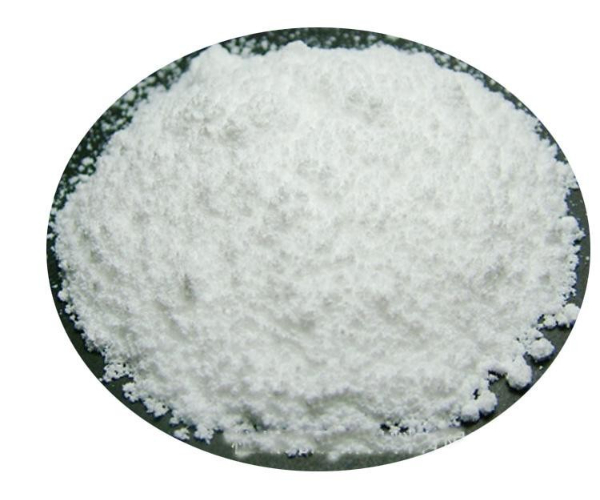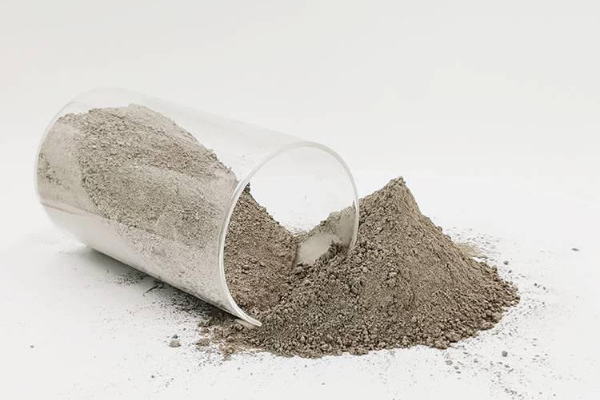Los aglutinantes refractarios son un material que combina polvo refractario en una forma sólida de cierta manera para mejorar su resistencia mecánica., resistencia al calor, resistencia a terremotos, y otras propiedades. Los métodos comunes de combinación de materiales refractarios incluyen los siguientes:
Encuadernación hidráulica

Encuadernación hidráulica, También conocido como endurecimiento hidráulico., Se basa en la reacción entre un aglutinante. (como el cemento) y agua en condiciones específicas de temperatura y humedad para producir productos de hidratación que crean un efecto de endurecimiento cementoso.. Dado que la resistencia generada por la reacción de hidratación y el endurecimiento del cemento depende del tiempo., temperatura, y condiciones de humedad, se requiere un curado adecuado. Los aglutinantes comunes incluyen el cemento de aluminosilicato.. Cuando el cemento de aluminato de calcio (con minerales de hidratación primaria CaO·Al2O3 y CaO·2Al2O3) se mezcla con agua, Sufre reacciones de hidrólisis e hidratación., dando como resultado la precipitación de hidratos en forma de escamas hexagonales o agujas CaO·Al2O3·10H2O (CAH10) y 2CaO·Al2O3·8H2O (C2AH8), o cúbico granular 3CaO·Al2O3·6H2O (C3AH6) Gel de hidratos y óxido de aluminio. (Al2O3gel). Esto forma una red cristalina cohesiva., llevando a la unión.
Similarmente, El óxido de aluminio reactivo sufre una reacción de hidratación y genera una placa monoclínica., fibroso, o minerales granulares de trihidróxido de aluminio (Bayeritas, Al2O3·3H2O) y boehmita en forma de placa ortorrómbica (boehmita, Al2O3·(1-2)H2O), resultando en una acción vinculante.
Enlace químico
Encuadernación de vidrio soluble: Usando silicato de sodio (vaso de agua) como aglutinante, mezclarlo con material refractario en polvo, luego darle forma y endurecerlo mediante secado.
Mortero refractario: Mezcle el polvo de material refractario con un aglutinante de mortero refractario para formar una mezcla similar a un mortero refractario., luego dale forma y sécalo para lograr la unión..
Unión de policondensación
La unión química utilizando aglutinantes orgánicos de alto contenido de polímeros implica una reacción de polimerización por condensación con catalizadores específicos o agentes reticulantes bajo ciertas condiciones., dando como resultado la formación de una estructura de red tridimensional y proporcionando fuerza de unión. Los aglutinantes comunes incluyen resinas como resinas de fenol-formaldehído y resinas lineales de fenol-formaldehído..

Cuando la resina de fenol-formaldehído se combina con un catalizador ácido y se calienta, sufre una reacción de condensación, lo que lleva a una mayor fuerza de unión. Similarmente, cuando la resina lineal de fenol-formaldehído se combina con hexametilentetramina (urotropina) y calentado, se produce una reacción de reticulación, lo que resulta en la formación de una estructura de red a través de la condensación y proporciona una buena fuerza de unión.
Unión cerámica
La resistencia se logra mediante un proceso de sinterización en fase sólida-fase líquida que ocurre a temperaturas relativamente bajas.. Para facilitar la sinterización sólido-líquido y promover la formación de una fase líquida., A menudo es necesario añadir sustancias de bajo punto de fusión., actuando como flujos, a la mezcla. Por ejemplo, en mezclas secas a base de alúmina, la adición de ácido bórico da como resultado la formación de una fase líquida pegajosa a 450-550°C, que ayuda a adherir los agregados refractarios entre sí. A esto le sigue una reacción sólido-líquido con α-Al2O3., dando lugar a la formación de compuestos con puntos de fusión más altos, como 2Al2O3·B2O3 (que se derrite constantemente alrededor de 1035°C) o 9Al2O3·B2O3 (que se derrite constantemente alrededor de 1930°C), uniendo así los agregados de corindón.

Similarmente, en mezclas silíceas de vibración seca, la adición de ácido bórico o bórax como ayuda a la sinterización dentro del rango de 500-1000°C promueve la sinterización, dando como resultado la formación de una unión cerámica. Mezclas de vibración seca de este tipo., que dependen de la adición de auxiliares de sinterización de temperatura baja a media, Se utilizan ampliamente como revestimientos para diversos hornos de inducción de frecuencia industrial y como rellenos para bocas de cuchara..
Unión adhesiva
La unión adhesiva es un tipo de unión que se produce cuando los aglutinantes líquidos utilizan una combinación de acciones., incluyendo adsorción, difusión, atracción electrostática, y fuerzas capilares, para crear una capa entretejida de difusión adhesiva. Este proceso genera fuerza de unión..
La unión adhesiva se puede clasificar en varios tipos.:
- Efecto de adsorción: Esto incluye la adsorción física., donde las moléculas se atraen entre sí a través de fuerzas intermoleculares (Fuerzas de Van der Waals), y adsorción química, que ocurre a través de interacciones que involucran enlaces químicos. Hay casos en los que ambos tipos de adsorción ocurren simultáneamente en la unión adhesiva..
- Efecto de difusión: Esto implica la difusión y penetración mutua del adhesivo y las moléculas del adherente debido a su movimiento térmico.. Esto conduce a la formación de una capa de difusión en la interfaz., resultando en un vínculo fuerte y seguro.
- Interacción electrostática: En la interfaz entre el adhesivo y el adherente., hay una doble capa eléctrica. La unión se produce debido a la atracción electrostática de esta doble capa eléctrica..
Los aglutinantes que crean uniones adhesivas suelen ser de naturaleza orgánica y temporal.. Funcionan a temperatura ambiente o bajas temperaturas y se queman después de someterse a un tratamiento térmico de temperatura media a alta.. Los ejemplos incluyen materiales como almidón., carboximetilcelulosa, y alcohol polivinílico. Algunas carpetas son semipermanentes.; después del tratamiento térmico de temperatura media a alta, dejan carbono residual que forma una red de carbono vinculante. Los ejemplos incluyen materiales como el asfalto., resinas de fenol-formaldehído, y resinas epoxi con alto contenido de carbono residual. Sin embargo, Este tipo de aglutinantes sólo son adecuados para su uso en condiciones reductoras.. Algunos aglutinantes inorgánicos también presentan una buena unión adhesiva., como el dihidrogenofosfato de aluminio, silicato de sodio, y sol de sílice. Los aglutinantes adhesivos se utilizan comúnmente en morteros refractarios., revestimientos, recubrimientos en aerosol, y mezclas de apisonamiento.
Unión cohesiva
El enlace cohesivo se basa en las fuerzas de Van der Waals., incluyendo enlaces de hidrógeno, y efectos de puente entre partículas coloidales o polvos ultrafinos a escala nano o submicrónica que se acercan o hacen contacto. Según la teoría DLVO, Hay fuerzas de Van der Waals entre partículas coloidales.. Cuando las partículas se acercan unas a otras, La repulsión se produce debido a la superposición de la doble capa eléctrica en las superficies de las partículas.. La estabilidad y cohesión de la solución coloidal. (suspensión) Dependen de los tamaños relativos de las fuerzas de atracción y repulsión entre partículas.. Los materiales que pueden exhibir unión cohesiva incluyen finos de arcilla., polvos ultrafinos de óxido, sol de sílice, sol de aluminio, y sol de sílice-alúmina.
 Grupo Rongsheng
Grupo Rongsheng

WeChat
Escanea el código QR con wechat